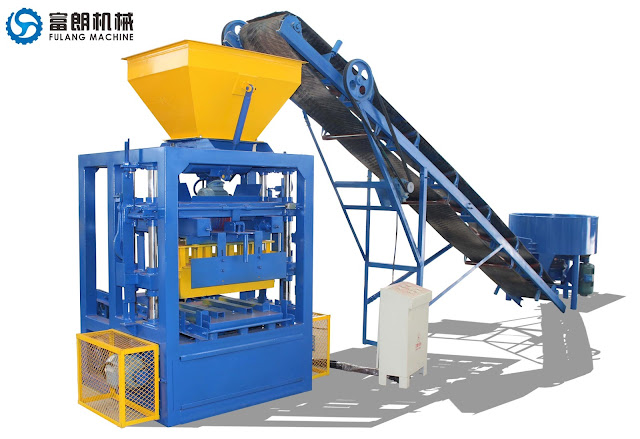How to make concrete bricks
Test
For each combination, a batch of concrete with the optimum moisture content was made and some blocks were molded using the yard's block forming equipment. Because block density is a good indicator of strength, blocks can be evaluated by weighing them after they are demolded. Adjust the mixture until it reaches the heaviest weight.
Water content
The moisture content is crucial. The mixture must be wet enough to bind together in a compaction but should not be so wet that the block will collapse (sag) when the mold is removed. A common mistake is to use a mixture that is too dry, resulting in incomplete compaction. The moisture content should be as high as possible because it will give better compaction results and thus provide the best strength. When the back of the bar or spatula rubs some mixture, the watermark is approximately correct when the ripple marks are formed. When watermarks start to appear when the module is demolded, the water content just exceeds the optimum value.
Mixing
Manual mixing should be done using a spatula on a horizontal concrete slab or steel plate. The total thickness is first extended to 50 to 100 mm thick. Then evenly distribute the cement and stones (if any) on the sand. Mix the aggregate with the cement until the color is uniform. Spread the mixture out, sprinkle water on the surface and mix. Continue this process until you mix in the right amount of water. For machine agitation, mix the aggregate and cement first, then gradually add water while stirring until the water content is correct.
Moulding
Manual machines should be used according to the manufacturer's instructions. The power machine mold should be filled until approximately six to eight compaction cycles are required to stop the compaction head. Too little or poor compaction should be avoided as it will result in a significant decrease in strength. The mold should be completely demoulded or removed so that fresh pieces are not damaged. Use plastic sheeting or any suitable cover material on the first day to prevent fresh water and prevent sun and wind drying until curing begins.
Conservation
On the second day after production, the blocks should be removed from the production slab or tray and stored in the stacking area for curing. Stacks should be carefully built to avoid chamfering and cornering. Curing is the process of maintaining a satisfactory moisture content and favorable temperature in the block to ensure hydration of the cement and to develop the best strength. In the South African climate, blocks are usually covered with plastic cloth to prevent moisture loss or to spray blocks with water. Blocks should be cured for at least seven days.
For each combination, a batch of concrete with the optimum moisture content was made and some blocks were molded using the yard's block forming equipment. Because block density is a good indicator of strength, blocks can be evaluated by weighing them after they are demolded. Adjust the mixture until it reaches the heaviest weight.
Water content
The moisture content is crucial. The mixture must be wet enough to bind together in a compaction but should not be so wet that the block will collapse (sag) when the mold is removed. A common mistake is to use a mixture that is too dry, resulting in incomplete compaction. The moisture content should be as high as possible because it will give better compaction results and thus provide the best strength. When the back of the bar or spatula rubs some mixture, the watermark is approximately correct when the ripple marks are formed. When watermarks start to appear when the module is demolded, the water content just exceeds the optimum value.
Mixing
Manual mixing should be done using a spatula on a horizontal concrete slab or steel plate. The total thickness is first extended to 50 to 100 mm thick. Then evenly distribute the cement and stones (if any) on the sand. Mix the aggregate with the cement until the color is uniform. Spread the mixture out, sprinkle water on the surface and mix. Continue this process until you mix in the right amount of water. For machine agitation, mix the aggregate and cement first, then gradually add water while stirring until the water content is correct.
Moulding
Manual machines should be used according to the manufacturer's instructions. The power machine mold should be filled until approximately six to eight compaction cycles are required to stop the compaction head. Too little or poor compaction should be avoided as it will result in a significant decrease in strength. The mold should be completely demoulded or removed so that fresh pieces are not damaged. Use plastic sheeting or any suitable cover material on the first day to prevent fresh water and prevent sun and wind drying until curing begins.
Conservation
On the second day after production, the blocks should be removed from the production slab or tray and stored in the stacking area for curing. Stacks should be carefully built to avoid chamfering and cornering. Curing is the process of maintaining a satisfactory moisture content and favorable temperature in the block to ensure hydration of the cement and to develop the best strength. In the South African climate, blocks are usually covered with plastic cloth to prevent moisture loss or to spray blocks with water. Blocks should be cured for at least seven days.
http://www.blocksmachine.com/




评论
发表评论